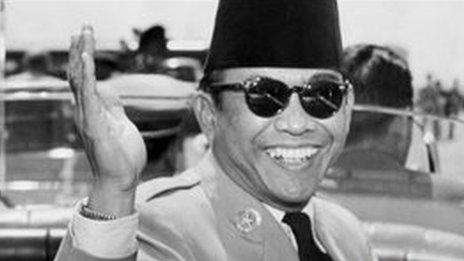Indonesia massacres: Declassified US files shed new light
- Published
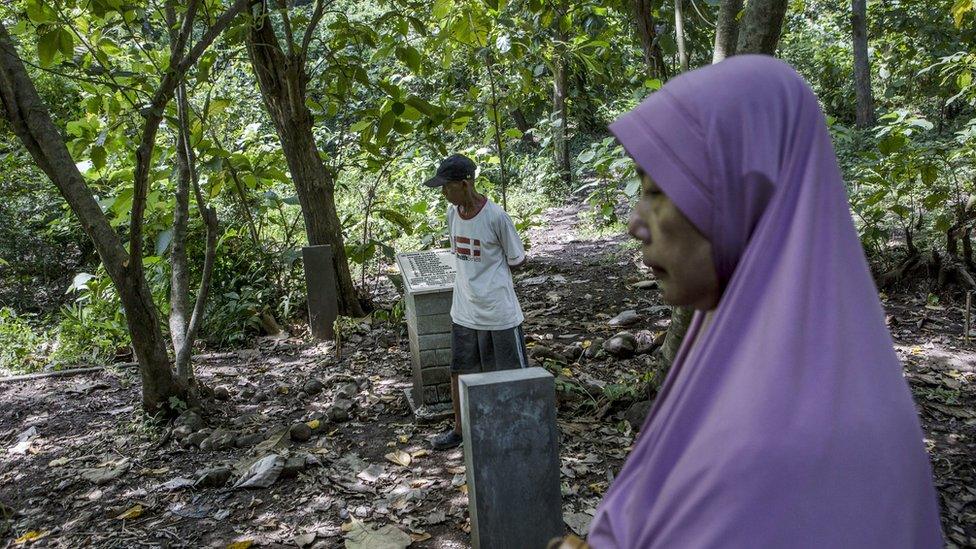
Relatives visit a site believed to be the burial ground for victims
The US knew people were being "delivered for slaughter" during a political purge in Indonesia during the 1960s, declassified documents reveal.
At least 500,000 people were killed between 1965 and 1966, after the army and local Muslim militia went on a rampage following an attempted coup.
It was one of the worst massacres of the 20th Century, but, at the time, Washington remained silent.
But these newly released memos reveal they had detailed knowledge of events.
The documents, external show US staff describing them in telegrams as "slaughter" and at times "indiscriminate killings", exposing an intimate knowledge of the Indonesian army's operations to "completely clean up" the Communist Party and leftist groups.
It is thought as many as three million could have lost their lives within a year.

The events of 1965-66 have been taboo for over 50 years in Indonesia
The violence - which was a taboo topic in Indonesia for almost 50 years and remains extremely sensitive even today - was unleashed after communists were accused of killing six generals at the end of September 1965.
It was the peak of the Cold War, and the struggle for power between the Communists, the military and Islamist groups was in full swing.
'Delivered for slaughter'
Five decades later, the contents of the US telegrams are chilling.
According to one from US embassy staff in East Java, dated 28 December 1965, "victims are taken out of populous areas before being killed and bodies are buried rather than thrown in river" as they had been previously.
The telegram says prisoners suspected of being communists are also "being delivered to civilians for slaughter".
Another document compiled by the US embassy's first secretary, dated 17 December 1965, was a detailed list of the communist leaders across the country and whether they had been arrested or killed.
But the documents also make for uncomfortable reading for Indonesia's biggest and most powerful Muslim organisations.
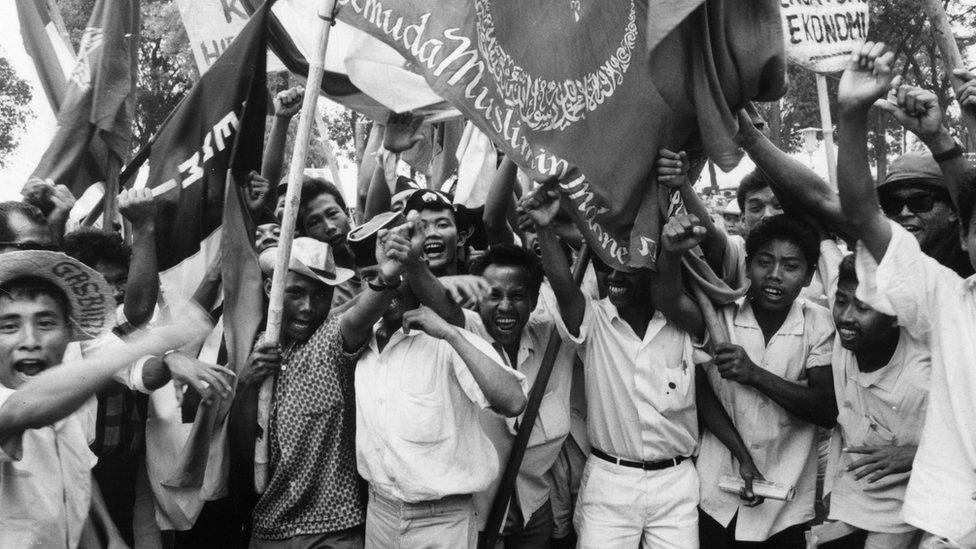
Muslim students in Jakarta demanding a ban of communist groups in 1965
A December 1965 cable from the US consulate in Medan in Sumatra said that Muhammadiyah preachers were telling people it was a religious obligation to "kill suspected communists". They were the lowest order of infidel, "the shedding of whose blood is comparable to killing chicken", the report said.
The US cable said this was being interpreted as a "wide licence for killing".
Another telegram notes that people with no connection to the Communist Party were being killed by the youth arm of Nahdlatul Ulama because of "personal feuds".
Breaking the silence
Brad Simpson, founder and director of the Indonesia and East Timor documentation, external project, pushed for the files' release
"These documents show in great detail just how aware US officials were of how many people were being killed," said Mr Simpson, noting "the US stance at the time was silence".
Human Rights Watch researcher Andreas Harsono also says his extensive research has found no public comments from the US government at the time about the killings.
Mr Simpson said there was growing public interest in Indonesia to know the truth after years of state anti-communism propaganda.

Oscar-nominated film The Act of Killing re-enacted the mass executions
"Indonesians can now read for themselves and learn about these important events in Indonesian history as part of a larger struggle for justice and accountability," he said.
The 39 formerly classified documents come from a collection of files, daily records and memos from the US embassy in Jakarta during the period 1964-1968.
They have been released by the National Declassification Centre, external, a division of the US government's National Archives and Records Administration. More documents, including CIA files, are set to be released later this year.
Revisiting the violence
Lieutenant General Agus Widjojo's father was one of the Indonesian generals killed in the alleged communist coup.
When the BBC showed Gen Widjojo the documents released on Tuesday, he said: "I cannot say anything to justify or reject what is explained in these documents, but basically the tragedy of 1965 was a struggle for power between the Communist Party and the army."
He denied knowledge of reports in the US memos about ethnic Chinese being killed in the violence and their businesses being burnt down.
"I have no knowledge that the violence went as far as that, the intensity of the violence and the atrocities I have no first-hand witness or information," he said.
But he believes the country needs to go through a truth-telling process.
After 50 years, the Indonesian government is going to investigate one of the worst massacres of the 20th Century.
"We should bring all parties concerned together to share their experiences but there must be one condition - the victims, they have to be at peace, they have to move on and see in reflection the tragedy of 1965 from the point of view of Indonesia in 2017."
He says Indonesian society, including his own institution, the military, is not ready to openly discuss the killings. Attempts at holding seminars to mark the anniversary of the killings last month were shut down by violent demonstrations from right-wing groups.
A 2012 Oscar-nominated documentary, The Act of Killing, is among a list of films about the killings banned in Indonesia.
"We are not looking for a situation to reopen the wounds, we are looking for a situation to heal the wounds and to move on," he said., "We would like to focus on what went wrong as a society that we were able to conduct such violence and such killings in such large numbers in such a short time."
Reporting by the BBC's Rebecca Henschke in Jakarta.
- Published2 June 2016

- Published18 April 2016
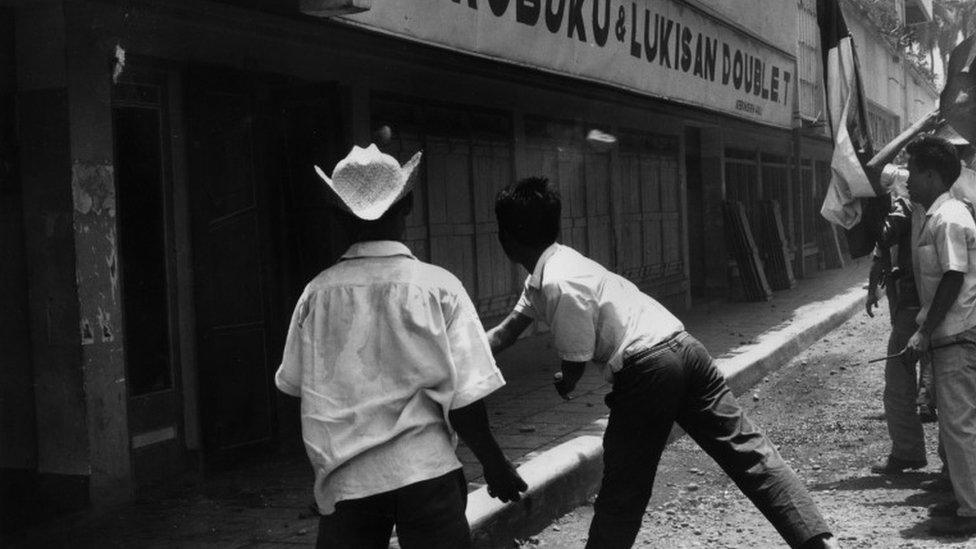
- Published2 June 2016
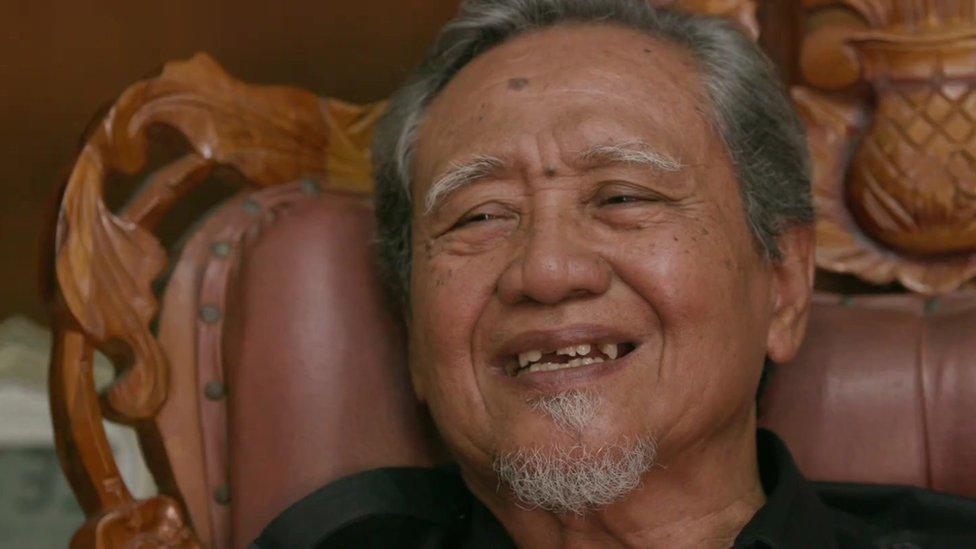
- Published17 April 2019
